GUERRILLA MARKETING IN A DRESS (1903)
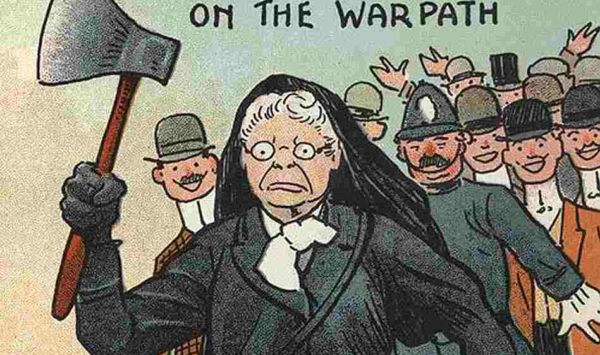
******************************************************************************************************************************** Brownstone Detectives investigates the history of our clients’ homes. The story you are about to read was composed from research conducted in the course of one of those investigations. Do you know the history of YOUR house? ******************************************************************************************************************************** When Brooklyn saloon owners saw Carrie Nation entering their Broadway establishments carrying her ax, their first thought was to protect their liquor. But when that grand and radical old figure of the Victorian temperance movement approached their bars, they were stunned at her request. “Gimme a drink – or else!” The original goal of Nation’s ax-swinging was to promote the temperance movement through the visual image of the destruction of its foe – liquor. It brought new prominence to a movement whose most visual image to date had been old women lambasting the drinking ways of men. When she started swinging that ax, though, she got attention, and so, in extension, did the temperance movement. CARRIE NATION – COMES TO BROOKLYN? But Nation, whose anti-saloon message was promoted primarily in Kansas, was a shocking sight in the Eastern District of Broadway. She had recently visited New York City, though, and so no one was willing to challenge that ax in the bars up and down the avenue – even so close to the liquor center of Brooklyn – Bushwick Avenue. “Dressed in a plush sacque, a neat fitting skirt, an old fashioned bonnet and carrying in one hand a dilapidated carpet bag and in the other a wooden ax, a person, […]
THE BOY HOODLUMS OF HANCOCK STREET (1899)
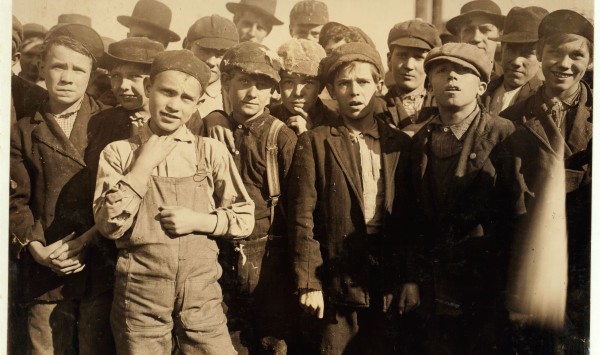
******************************************************************************************************************************** Brownstone Detectives investigates the history of our clients’ homes. The story you are about to read was composed from research conducted in the course of one of those investigations. Do you know the history of YOUR house? ******************************************************************************************************************************** If you were a boy hoodlum in “Bed-Stuy” back in 1899, then it is a good bet that you conducted your “outrages” along that stretch of Howard Avenue between Halsey and Hancock Streets. For it was there that a “small reign of terror” was “inaugurated” during this period, as small gangs of boys “armed with sticks and stones” prowled about the area with determined mal intent. A NEIGHBORHOOD COMPLAINS – THE EAGLE RAILS “The irrepressible and unregenerate young generation of boys in the vicinity of Howard avenue and Halsey street are making existence a heavy load to the law abiding population of that community,” railed the Brooklyn Daily Eagle. “The choicest lot of hoodlums in the city have banded themselves together,” the paper continued “and use that block as a fixed center, from which they conduct a campaign of well planned outrages for a radius of many blocks around.” A CASE IN POINT Two boys, in particular, were reported to the police after having assaulted a “little 10 year old boy who was going to the grocery store for his mother.” The boys, a 14-year-old member of the Earle family living at at 73 Howard Avenue and a boy named Goldstein, living at 96 Howard Avenue, “led the charge upon the […]
HOW CASEY THE COP SPELT “KOSCIUSZKO” (1904)
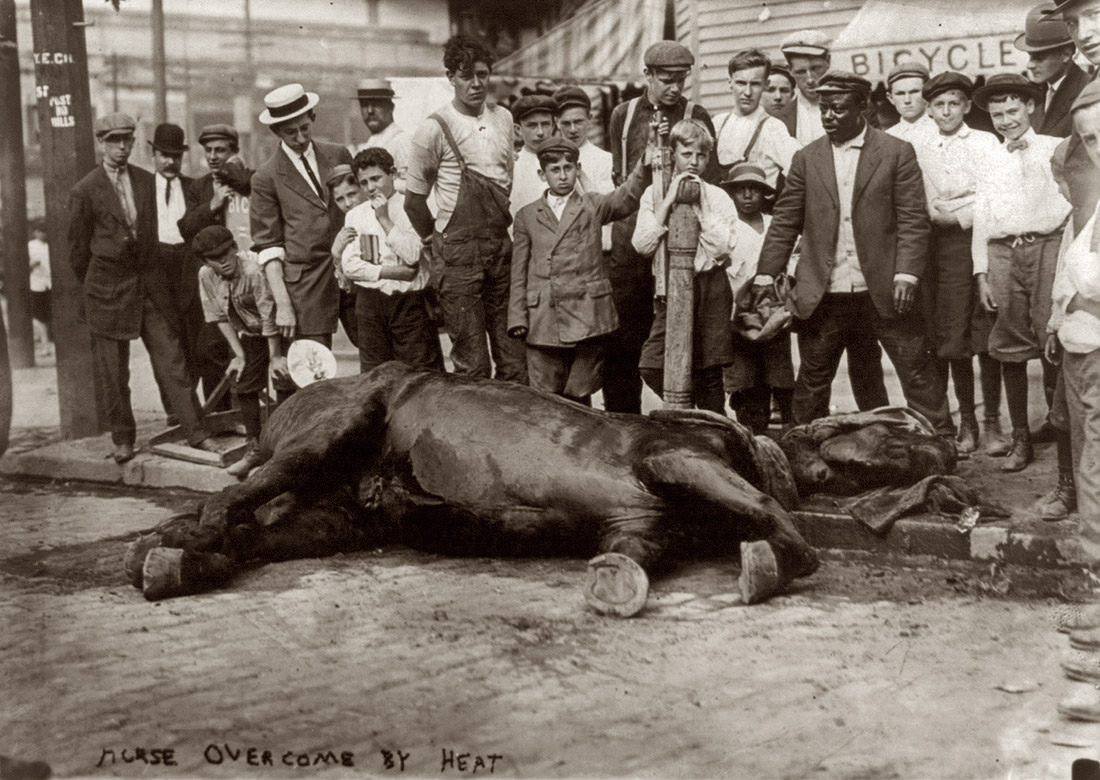
******************************************************************************************************************************** Brownstone Detectives investigates the history of our clients’ homes. The story you are about to read was composed from research conducted in the course of one of those investigations. Do you know the history of YOUR house? ******************************************************************************************************************************** Andrzej Tadeusz Bonawentura Kościuszko was a Polish military officer who helped the U.S. to gain independence from the British during the Revolutionary War. Because of his dedication there are numberous public locations named after him – including a street in Bed-Stuy. Even more numerous, though, are the tales about the difficulty in spelling the man’s name. The best tale, though, involves a tail – and a horse and a policeman. SPELLING KOSCIUSZKO “There was once an Irish policeman who was responding to the presence of a dead horse on Kosciuszko Street. Upon arriving at the scene of the dead horse, Casey began to write his report. When he got to the part where he was supposed to write the location in which the horse was discovered, the policeman faltered. “He did not know how to spell the street name. “So, Casey looked at the horse and then at his report, and he thought. A few moments later, he shoved the half-finished report in his cap, grabbed the horse by its tail, and began dragging it down the street to the corner of Marcy Avenue. Once there, he stopped, pulled the report out from his cap, and added the ‘location’ of the dead horse – ‘Marcy Avenue.’” By the way, back in […]
AUNT CAR vs. THE IMMIGRATION ACT OF 1917
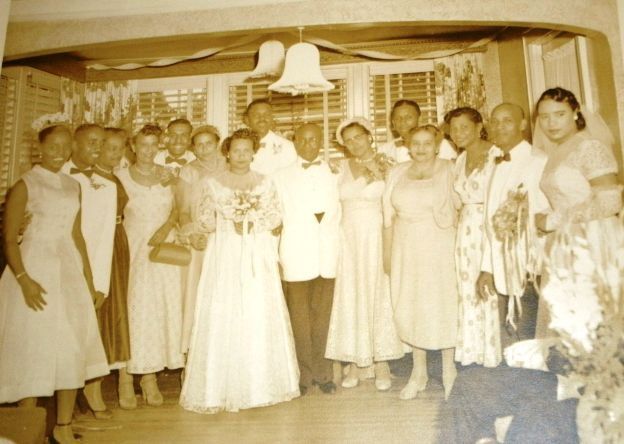
******************************************************************************************************************************** Brownstone Detectives investigates the history of our clients’ homes. The story you are about to read was composed from research conducted in the course of one of those investigations. Do you know the history of YOUR house? ******************************************************************************************************************************** (In the process of writing a House History Book, we research the history of a home’s owners. While researching one particular brownstone, we discovered that – soon after purchasing her brownstone in the 1950s – the Federal Department of Justice issued a warrant for one owner’s arrest and deportation. Sadly, this was not a rare event in Bedford-Stuyvesant at the time.) JAMES GILL MEETS “AUNT CAR” It was probably at some point after James Henry Gill, a mechanic from Trinidad, had registered for the Selective Service in 1942 that he met Caroline Beatrice McLean. McLean, a former schoolmarm from Barbados was then working as a garment worker and living with her sister in an apartment in Harlem. The exact date, time and place of the encounter is lost to the ages. What we do know, however, is that once they did meet they made a great match. Eventually, the couple would take the “A” Train – soon to become famous by way of Duke Ellington’s song – to Bedford-Stuyvesant. Once in Bedford-Stuyvesant, they moved into a brownstone at No. 9 Arlington Place, close to Bedford Avenue. MOVING TO MACON STREET A few years later, on 15 May of 1951, James and Caroline purchased 738 Macon Street from the former owners, the […]
THE RENTERS OF CARROLL GARDENS (2017)
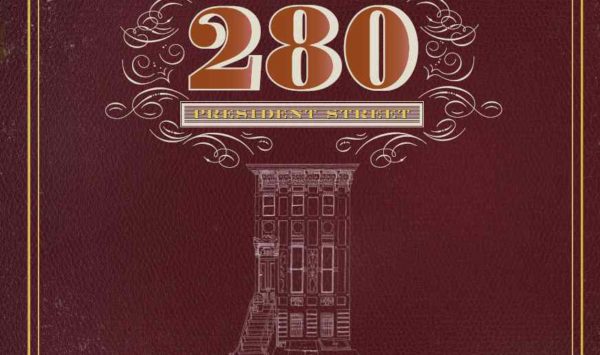
“A British cheese dealer, a newsman who predicted his own death, a leather merchant with a penchant for chorus girls, an alleged wife murderer, a German dentist with political aspirations, a Norwegian hero tugboat captain, and an Italian bomb builder…” These are many of the characters who were discovered during the recent investigation into the history of a Carroll Gardens brownstone. The historic property, No. 280 President Street, is an 1880 brownstone that was, additionally, built by a man who turned out to be the product of a clandestine relationship that rocked Brooklyn in the 1870s with stories of challenged wills, mental illness, and “other” women, presented under such headlines as “BEDEVILED” and “DRAKE’S WILL: His Illegitimate Children Most Carefully Provided for.” For nearly 100 years after the house was completed, No. 280 served its various owners as a rental property. The first owners to actually live in the home, Joachim and Eunice Auer, purchased it in 1979. After navigating redlining, remediating a rat and termite infestation, and entering into a year-long renovation, the Auers settled into enjoying their 2-story and basement home directly across the street from Carroll Park. While the Auers had always been interested in the history of their house (indeed, it was one of the reasons that they bought the house), and after doing some amount of research themselves, they decided to find someone who could more fully track down the history of their home. They turned to a detective – a Brownstone Detective. After a year […]
THE GREAT BROOKLYN FLOOD OF 1903
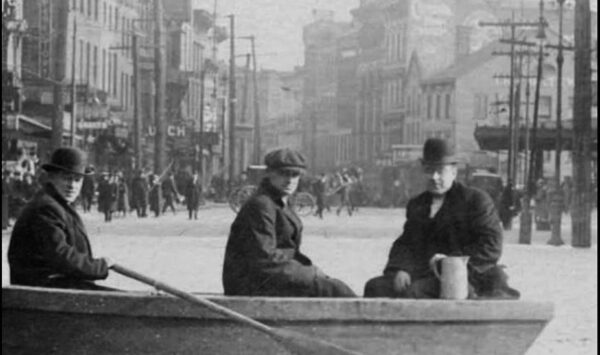
******************************************************************************************************************************** Brownstone Detectives investigates the history of our clients’ homes. The story you are about to read was composed from research conducted in the course of one of those investigations. Do you know the history of YOUR house? ******************************************************************************************************************************** By 7 a.m. on Friday, 9 October 1903, the cellars all along Macon Street were completely inundated with water that was rising quickly toward the basement joists. Without let up, the turgid brown waters continued to pour into the homes through the under-stoop doorways until the floodwaters had reached the level of the basement windowsills, whereupon it then began to pour also through the windows and into the basement dining rooms. The Ocean Hill area, like much of Brooklyn, had fallen victim of the heavy rains that had been falling continuously for much of the night. All the residences along Hancock, McDonough, Macon, Decatur, Bainbridge and Chauncey Streets were so flooded that residents on the ground floor apartments discovered upon waking that they were forced to go to the second floors to escape the waters. “IN SARATOGA PARK…BENCHES WERE FLOATING ABOUT…” The paths in Saratoga Park, according to one newspaper account, “had become running streams and benches were floating about.” The nearby Putnam and Halsey streetcars stopped running, as “it was impossible to take on any passengers, as the water was as high as the seats.” Streets and sidewalks were submerged under several inches of water, and, eventually, furniture moving vans were pressed into service by the police to be used […]
HOW A CENSUS-TAKER SAVED OUR BLOCK (1900)
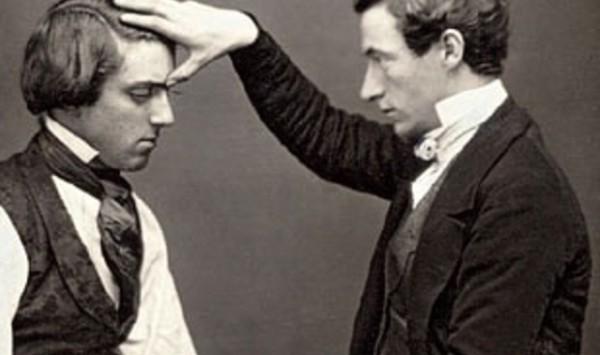
******************************************************************************************************************************** Brownstone Detectives investigates the history of our clients’ homes. The story you are about to read was composed from research conducted in the course of one of those investigations. Do you know the history of YOUR house? ******************************************************************************************************************************** I can tell you a little bit about every single family on my block. Well, not the present day families, of course – that might be a little creepy. Actually, it is a lot easier to extract such personal information about the families that lived on my block more than 100 years ago – in the year 1900. No, I am not a mesmerist or paranormal investigator. I don’t read cards or tea leaves. Nor do I make tables float or ask the spirit guides to knock in answer to my questions. I happen to use a less fantastic, more pedestrian source for this type of information for my answers. For, you see, I am a Brownstone Detective – and I use the 1900 Federal Census. I’M FROM THE FEDERAL GOVERNMENT AND I’M HERE TO HELP. The founders of our Federal government in the 18th century demanded that a decennial census be instituted. The demand was delineated within the U.S. Constitution, and the first attempt at listing Americans took place in 1790. The State of New York decided, too, that knowing who lived within its political boundaries was important. And so the state also began taking its own census in 1825. It was a decennial census, as well, which, in order […]
TO DENY A “COLORED” BLOCK PARTY (1920)
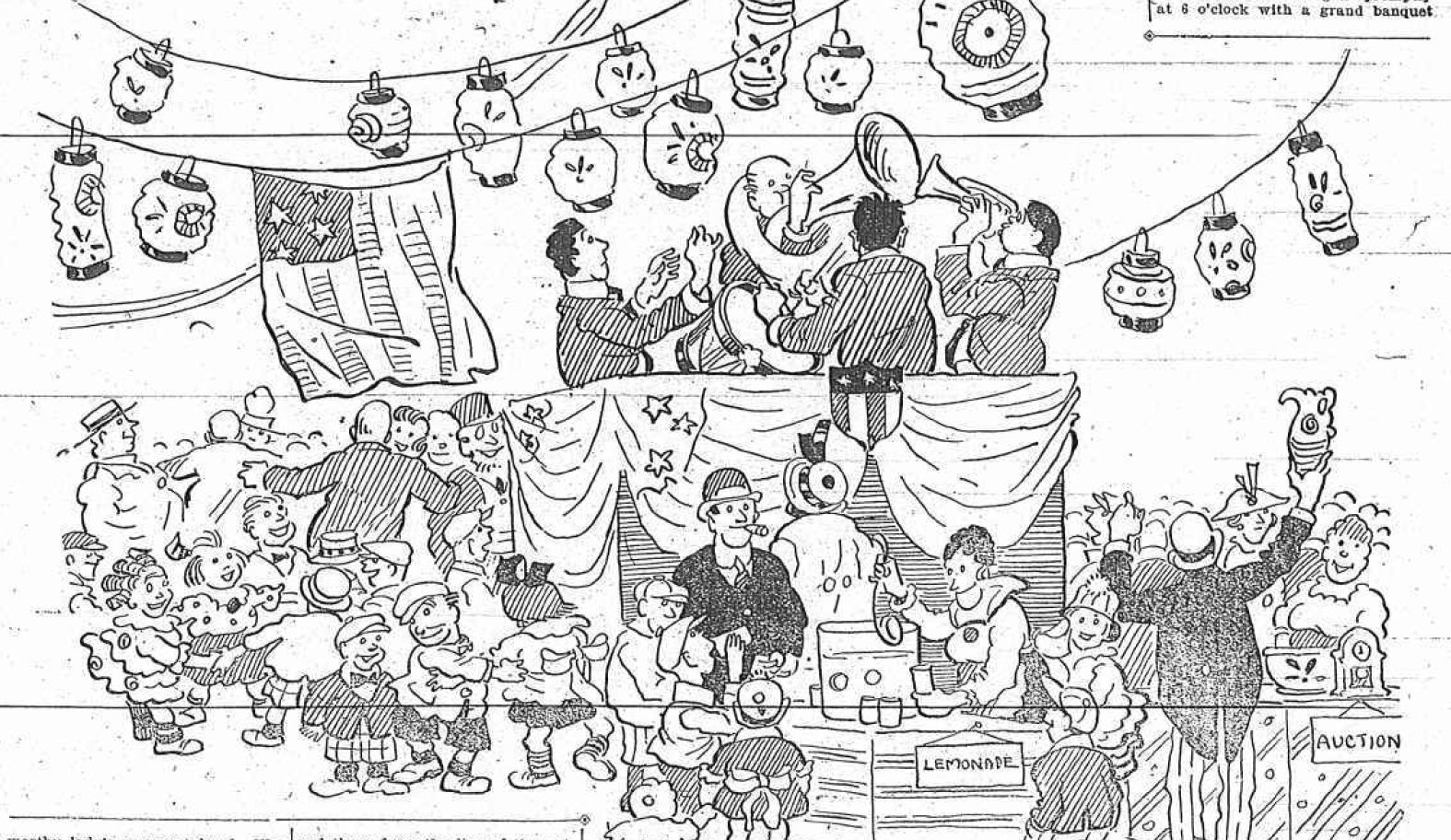
******************************************************************************************************************************** Brownstone Detectives investigates the history of our clients’ homes. The story you are about to read was composed from research conducted in the course of one of those investigations. Do you know the history of YOUR house? ******************************************************************************************************************************** Block party season upon us. It is a time of blocked-off streets, replete with the sounds of children happily playing, the smells of barbecues up and down the block, and carefree feelings of the beginning of summer. But this is also a time to remember some freedoms that were not always available to certain citizens – those freedoms for which struggles were necessary that they may be obtained. As such, it is instructive to remember how one group of people was often at the mercy of the whims of another. This story tells a tale that took place in 1920 when block party permits were not always so easy to obtain, particularly when the freedoms of those in the minority were proscribed by those in the majority… THE TRICKLE STARTS… In the mid-1930s, after the “A Train” had been extended into Brooklyn, African-Americans began to move in large numbers from Harlem into Bedford-Stuyvesant. Although the Eighth Avenue Express was the vehicle for that migration, the impetus was a desire for less crowded neighborhoods, more plentiful jobs (at the Brooklyn Navy Yard), and better housing conditions. The trickle that started this migration, though, began about 10 to 20 years earlier as African-American professionals of southern and Caribbean descent made their way to […]
THE DAY RIOTERS STORMED BROOKLYN (1895)
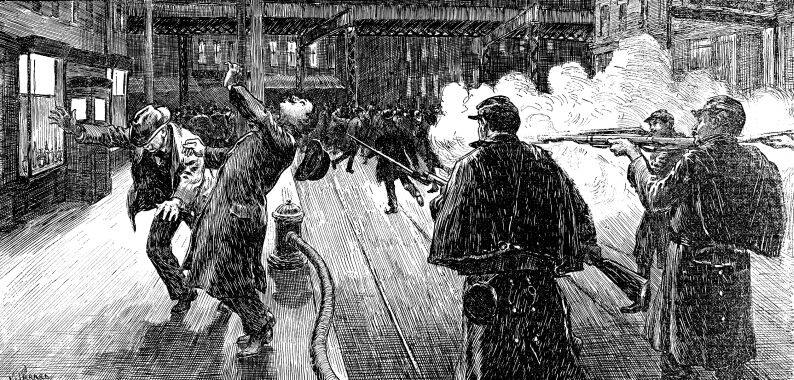
******************************************************************************************************************************** Brownstone Detectives investigates the history of our clients’ homes. The story you are about to read was composed from research conducted in the course of one of those investigations. Do you know the history of YOUR house? ******************************************************************************************************************************** (The above picture shows the New York State militia shooting a man on Halsey Street, near the corner of Broadway. You can see the recently erected elevated train line at the end of the block.) In 1895, Halsey Street near Saratoga Park had become a war zone. The Brooklyn Streetcar strike had begun on 15 January, and before the week was over the agitation would be in full force. The strike, which began with a walkout, would quickly devolve into a pitched battle between the Knights of Labor and streetcar workers on one side and the streetcar line owners, the police and the New York State Militia on the other. The main focus of much of the strikers’ attention in this part of Brooklyn, though, was the Halsey Street Rail Road Barns. These, located near the corner of Halsey Street and Broadway, were where the streetcar line stored its cars, quartered its horses, and from whence the line’s streetcars were dispatched. After the workers had called the strike, 5,500 of them would walk off the job for better conditions. The streetcar line owners (the lines were privately owned and operated at the time) countered this strike by calling in scabs who would attempt to operate the streetcars in the workers’ absence. […]
THE “7-SECOND MAN” OF BED-STUY (1918)
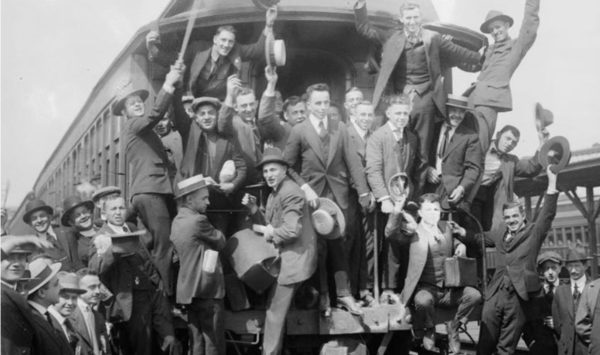
******************************************************************************************************************************** Brownstone Detectives investigates the history of our clients’ homes. The story you are about to read was composed from research conducted in the course of one of those investigations. Do you know the history of YOUR house? ******************************************************************************************************************************** The new “Victory and Peace” war memorial at Saratoga Park, located in the Stuyvesant East section of Brooklyn, was the subject of a public dedication on 10 September 2014. The Brownstone Detectives worked closely with the Parks Department by locating pictures, stories, and relatives of the Stuyvesant Heights men who gave their lives in the Great War. This biography is about one of those men. PRIVATE EDWARD J. BELL In 1920, as the “War to End All Wars” was still fresh on America’s collective conscious, American Legion posts were sprouting up everywhere. The trend existed for two reasons: to support the men who had come back from the front, and to memorialize those who never returned. Many of the posts were named after those who had made the ultimate sacrifice. The Edward J. Bell Post No. 790 had recently been formed to honor Edward Joseph “Eddie” Bell, a 25-year-old machine-gunner, and Purple Heart winner, who died in France on 16 August 1918, from the result of injuries sustained in combat. Born on 6 November 1892, Bell had lived with his father, his aunt and his grandparents at 735 Macon Street. Sometime around 1910, the tall, black-haired, and blue-eyed Bell had graduated from Commercial High School, and soon thereafter lost his father. […]